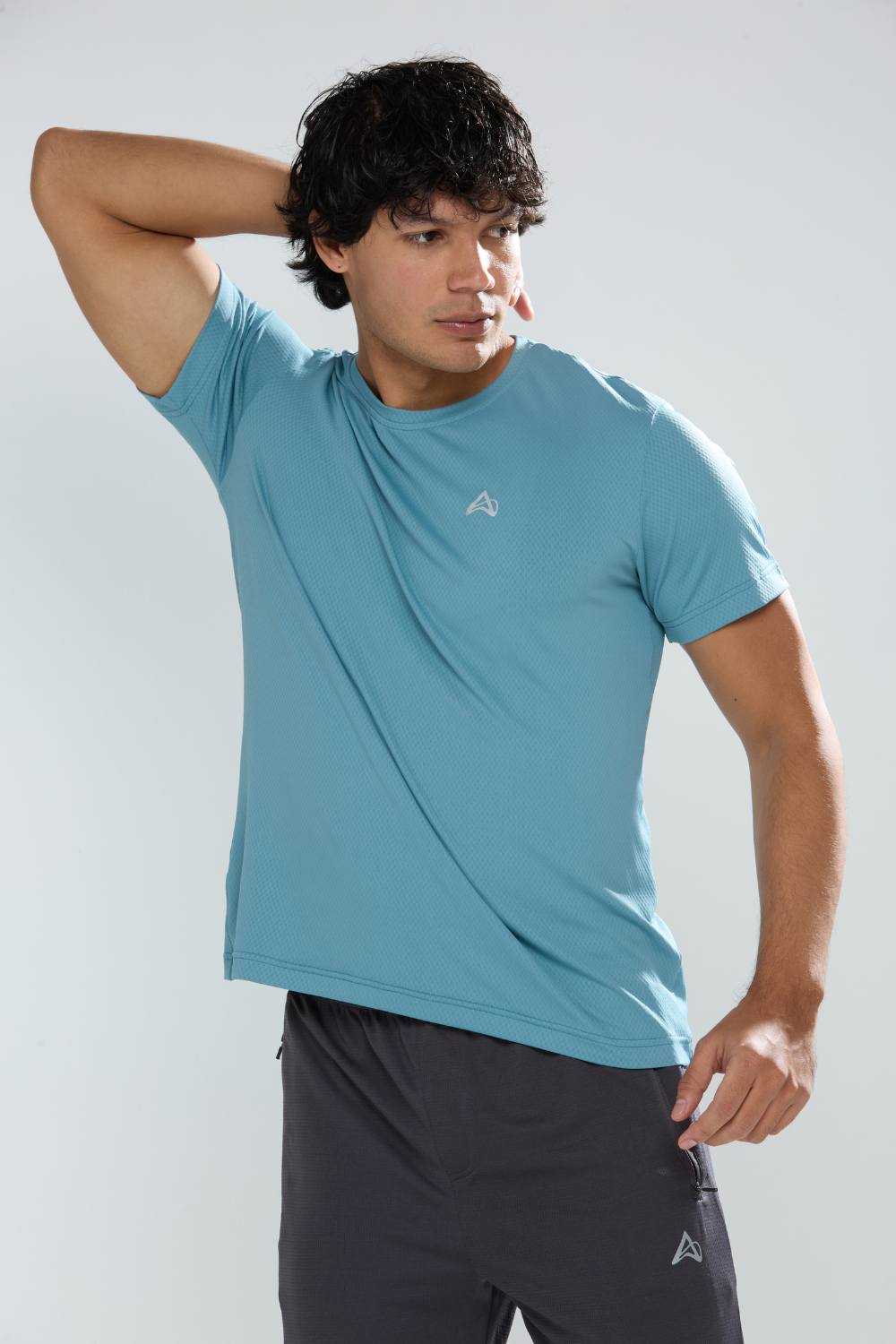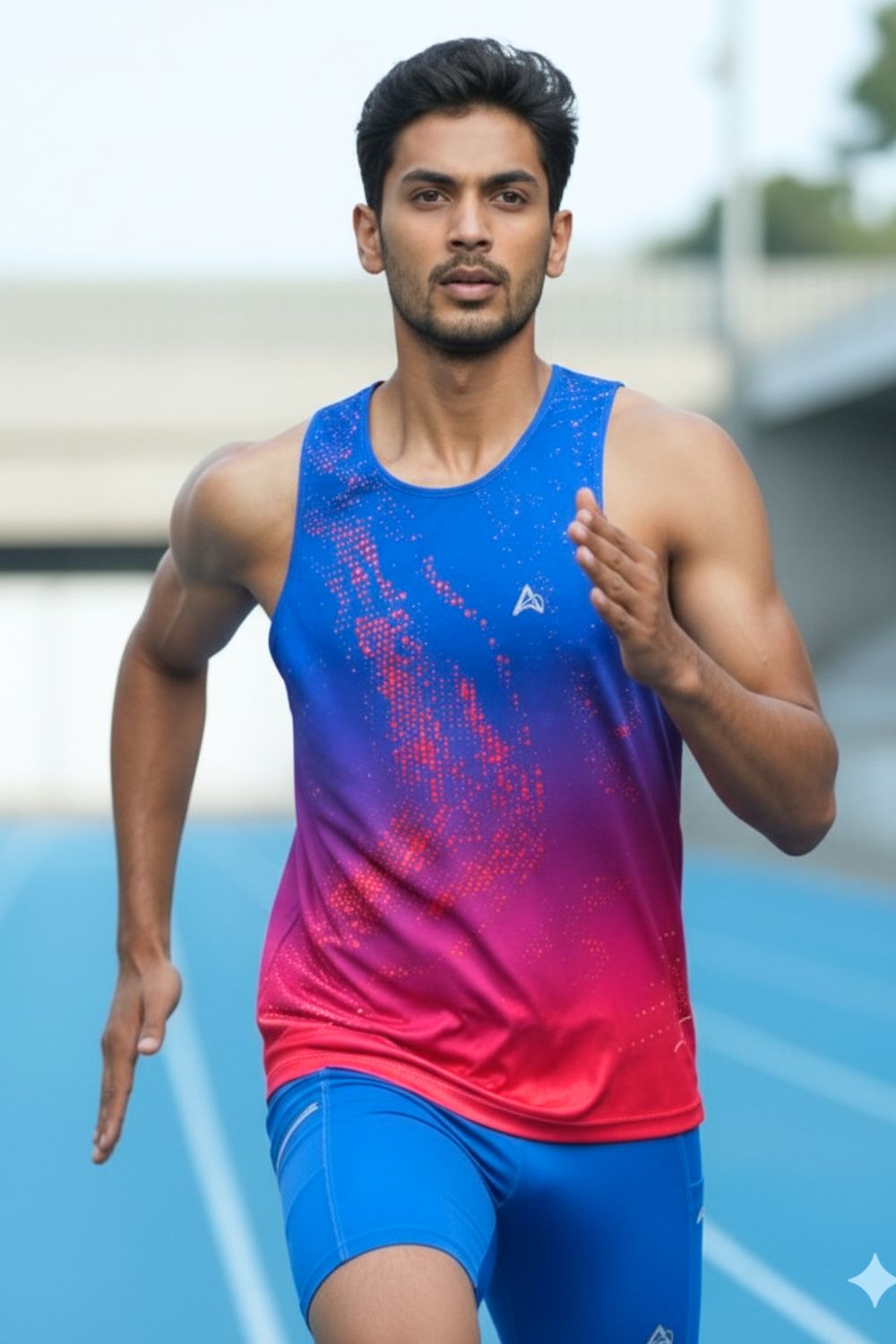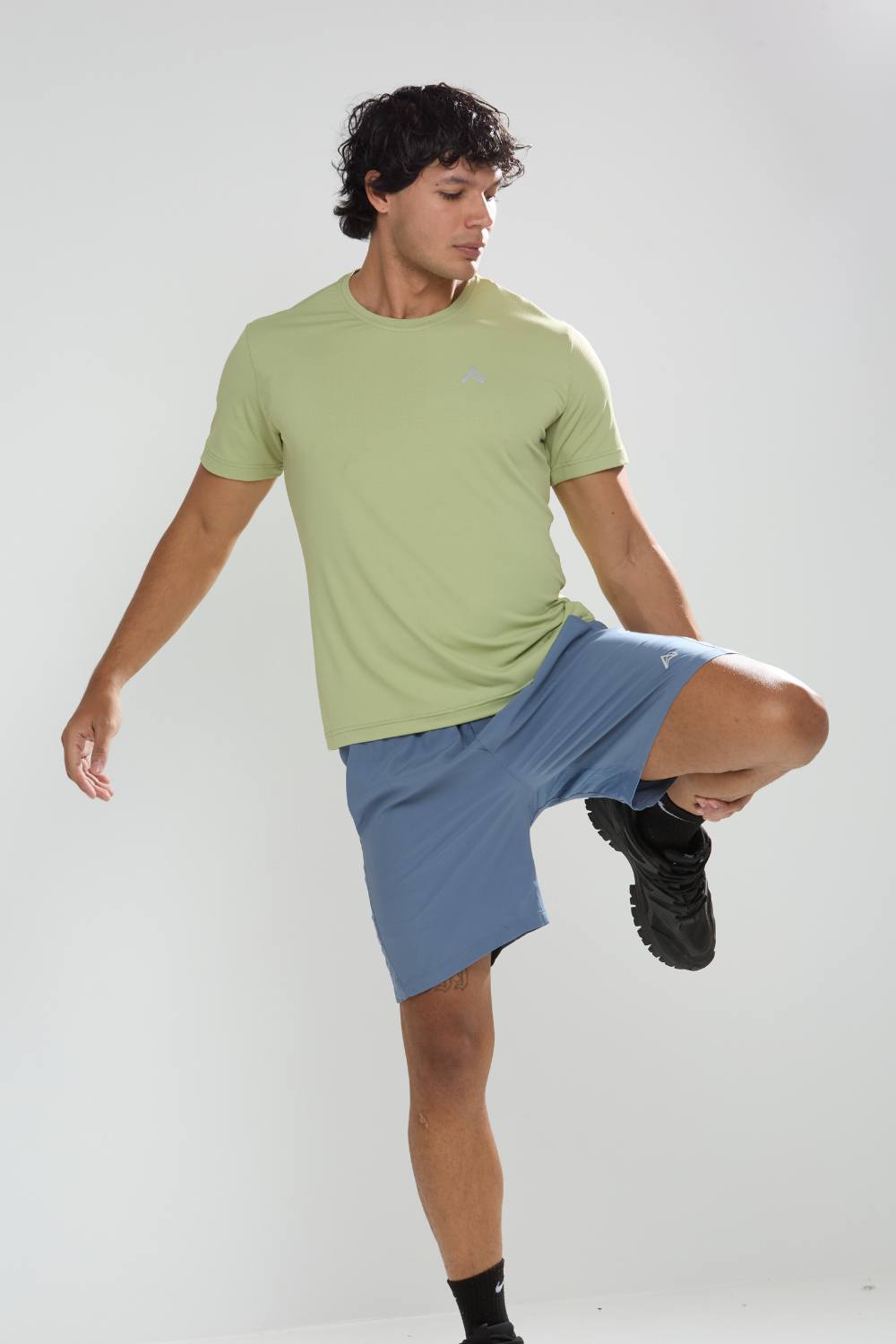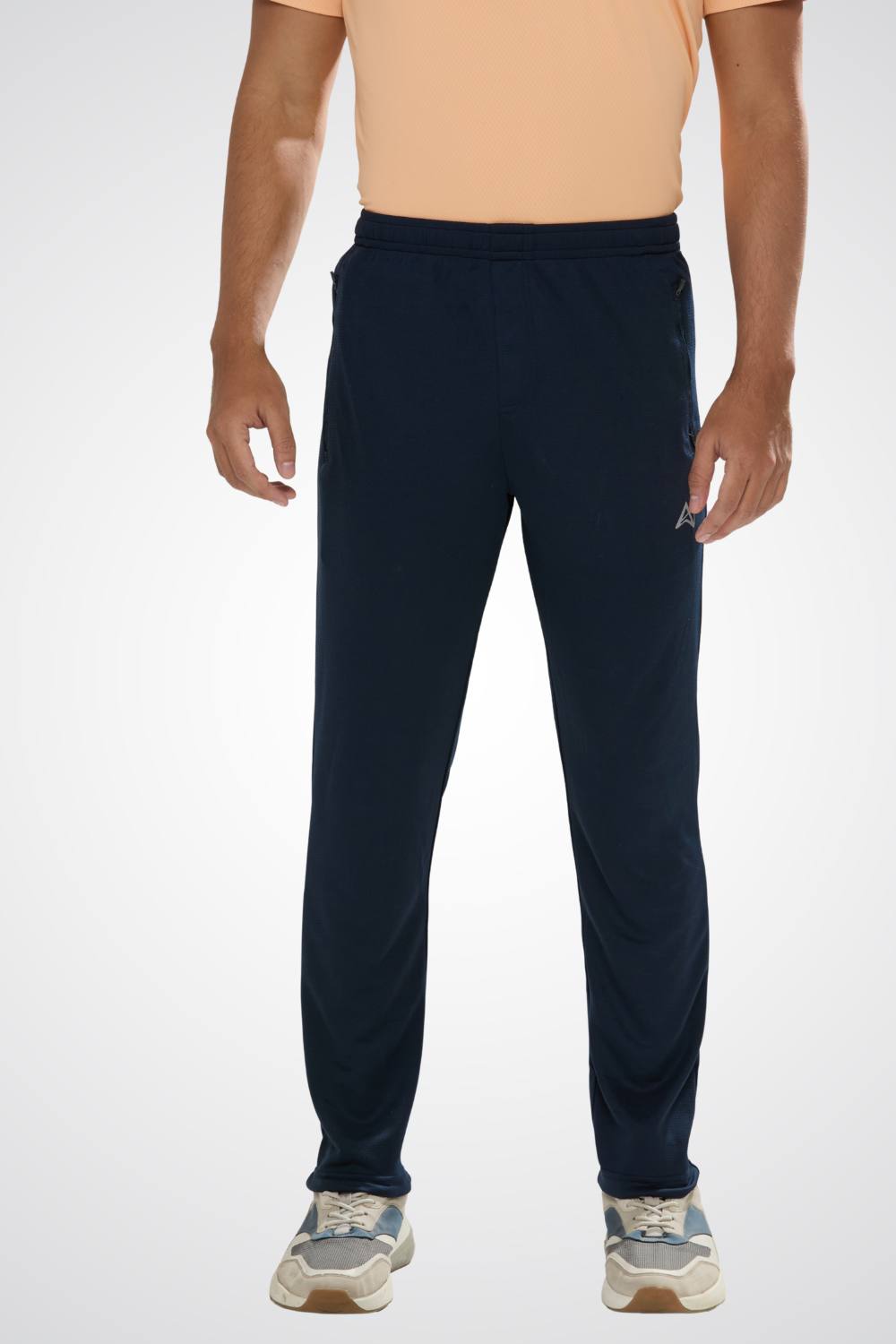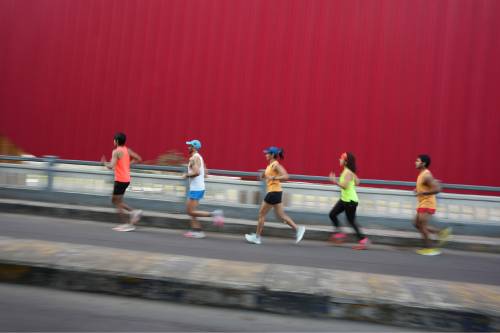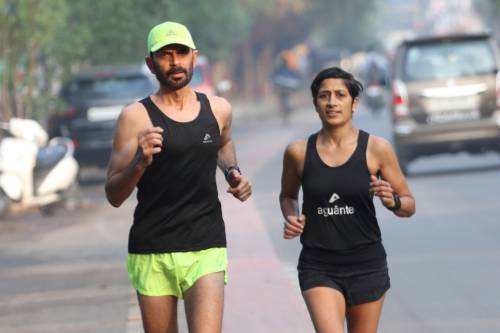Quick Listen:
As dawn breaks over Bengaluru's Cubbon Park, the air fills with the rhythmic thud of feet on earth, a symphony of determination echoing through the mist-shrouded paths. Runners of all ages and backgrounds converge here, pushing limits in a ritual that's become emblematic of India's evolving fitness landscape. From the bustling promenades of Mumbai's Marine Drive to the serene trails of Delhi's Lodhi Gardens, a profound transformation is unfolding. Urban marathons are drawing record crowds, digital fitness platforms are teeming with users, and indigenous activewear brands are emerging as vital allies for this expanding cadre of endurance enthusiasts. Far more than mere attire, these garments represent the backbone of a cultural shift, challenging the longstanding supremacy of cricket in the nation's sporting ethos.
Tired of gear that slows you down? Chafing, soggy fabrics, and missing pockets kill your run's momentum. At Aguante, we're runners who get it. Our high-performance activewear features moisture-wicking fabrics, ergonomic designs, and smart storage to keep you focused. Shop Now!
A Nation Embracing Motion
India's running ecosystem has surged dramatically in the past decade, propelled by heightened awareness of personal health and a broader pivot toward proactive living. The evidence is striking: the India sportswear market achieved a valuation of USD 10.2 million in 2024 and is anticipated to expand to USD 16.6 million by 2033, registering a compound annual growth rate of 5.1 percent from 2025 onward. Concurrently, the encompassing activewear sector recorded USD 15,107.3 million in revenue during 2024, with projections indicating a climb to USD 29,972.9 million by 2030 at a robust 12.2 percent CAGR. These figures underscore not merely economic trends but a societal embrace of physical vitality, camaraderie, and the pursuit of wellness amid urban hustle.
Once confined to elite circles, marathons now stand as pillars of cultural engagement. Signature events such as the Tata Mumbai Marathon and the Vedanta Delhi Half Marathon attract multitudes tens of thousands ranging from seasoned athletes to novices motivated by philanthropic causes or personal milestones. The landscape has broadened remarkably; India hosts over 1,500 running events annually, generating approximately $450 million in economic impact and engaging 2.5 million registered participants. Social platforms amplify this momentum, where fitness influencers disseminate training regimens, nutritional advice, and triumphant narratives, fostering a virtual support network that transcends geographical boundaries.
Yet, the essence of this surge lies in the equipment enabling it. Endurance runners demand apparel resilient to India's climatic extremes from scorching heatwaves in the south to relentless monsoons and biting cold in the north. This necessity has catalyzed the ascent of domestic activewear enterprises, which deliver high-caliber, performance-oriented clothing that competes with international stalwarts like Nike and Adidas, frequently at more accessible price points. These brands are attuned to local nuances, ensuring gear that not only performs but resonates with the Indian runner's daily realities.
The Ascendancy of Indigenous Innovators
Domestic activewear ventures are forging a distinctive space by merging cutting-edge design with region-specific acumen. Diverging from multinational corporations that prioritize Western ergonomics and environments, these Indian entities customize offerings to address the subcontinent's diverse demands. Essential features include advanced breathability and moisture management for steamy locales like Chennai, alongside adaptable fits accommodating varied physiques and aesthetic preferences infused with India's vibrant palette. Sustainability is increasingly integral, with many incorporating eco-friendly elements to align with conscious consumerism.
Prominent examples abound. Alcis Sports has forged alliances with major marathon organizers, supplying lightweight, perspiration-defying ensembles tailored for prolonged exertion. Cultsport captivates urban female joggers with its budget-friendly, fashionable leggings ideal for city circuits. Bliss Club emphasizes movement-centric, inclusive sizing up to larger frames, promoting body positivity while delivering bold, youthful designs. Kica Active appeals to Gen-Z with streetwear-infused sporty aesthetics, and Cava Athleisure focuses on versatile pieces blending function and flair. Aastey and Spirit Animal champion size inclusivity, the latter extending to 6XL, ensuring broader accessibility.
HRX by Hrithik Roshan leverages celebrity appeal to offer dynamic gym wear, while Wolfit and Yogue provide adaptable clothing suitable for workouts and casual outings. Baller Athletik distinguishes itself through bioceramic mineral-infused fabrics enhancing recovery, and Athlos, Upfit prioritize sustainability in their lines. These entities transcend commerce by cultivating communities via authentic social media narratives featuring everyday athletes, they forge emotional bonds, particularly resonant among women, who dominate revenue streams and propel market expansion as per recent analyses. In 2024, women accounted for 56.59 percent of the activewear market share, underscoring their pivotal role.
Navigating Obstacles in the Pursuit
Amid this upward trajectory, Indian activewear firms confront substantial barriers. Established global entities such as Adidas, Puma, and Under Armour retain a aura of superiority, their emblems evoking unparalleled excellence and innovation. Urban runners often favor these for their sophisticated textiles and international prestige, perceiving them as benchmarks for reliability. While local brands advance, they occasionally trail in pioneering research for specialized materials like thermoregulating weaves or integrated wearables.
Logistical challenges persist, too. Although digital marketplaces have democratized availability, penetration into secondary and tertiary urban centers remains uneven, leaving aspiring runners with limited options beyond major metros. Striking equilibrium between cost-effectiveness and premium quality poses another conundrum. With escalating household earnings, consumers seek superior performance without exorbitant costs. Insights from the sports apparel arena reveal a 2024 valuation of USD 705.85 million, forecasted to ascend to USD 1,592.58 million by 2030 at a 14.52 percent CAGR, fueled by cravings for chic, utilitarian attire. Nonetheless, achieving this demands enhanced scalability and inventive prowess domains where indigenous players are progressively investing but still maturing.
Consumer perceptions add complexity; a lingering bias toward foreign labels can overshadow local ingenuity, necessitating robust marketing to shift mindsets. Supply chain vulnerabilities, exacerbated by global fluctuations, further complicate consistent production and delivery.
Prospects Beckoning Ahead
Optimism abounds for the sector's horizon. India's burgeoning middle class, coupled with amplified involvement in organized athletic gatherings, cultivates a thriving ecosystem. State-sponsored programs like Khelo India and Fit India Movement invigorate grassroots participation, inspiring younger demographics to adopt running and allied pursuits. This synergy with digital retail's proliferation empowers native brands to accelerate expansion. Outlets such as Myntra, Flipkart, and Amazon serve as vital conduits, extending reach to remote locales and leveraging data analytics for personalized offerings.
Innovation spearheads progress. Select Indian labels are integrating artificial intelligence for adaptive apparel that responds to physiological cues, enhancing user experience. Others champion green initiatives, utilizing recycled synthetics or organic fibers to captivate eco-aware demographics the sustainable athleisure niche is slated for a 5.0 percent CAGR through 2031. Domestic production confers advantages: abbreviated logistics enable swift adaptations and bespoke regional variants, bolstering competitiveness.
Run clubs exemplify communal growth, transforming solitary jogs into social endeavors and amplifying brand visibility through grassroots endorsements. Events like the Kochi Marathon, Chandigarh Fast Marathon, and New Delhi Marathon in early 2025 highlight this vibrancy, drawing diverse crowds and underscoring inclusivity. As per industry observers, these developments position local brands to narrate tales of tenacity and heritage, resonating profoundly with the indigenous athlete.
Crossing Boundaries with Worldwide Aspirations
Twilight descends on Mumbai's Marine Drive, where joggers assemble for nocturnal sessions, their vivid, home-crafted outfits gleaming under streetlamps. India's running renaissance transcends fleeting fads it's a paradigm evolution empowering multitudes to pursue vitality, fellowship, and self-achievement. At its core, native activewear enterprises demonstrate that groundbreaking solutions need not originate abroad. Bolstered by the activewear market's steady ascent and the sports apparel domain's projected 14.52 percent CAGR to 2030, these innovators are primed not merely to vie but to pioneer.
Challenges endure, yet the panorama brims with potential. Fusing ethnic essence with universal benchmarks, Indian activewear firms may soon grace international arenas, equipping athletes from New Delhi to distant horizons. Presently, they ignite a country's stamina aspirations one pace, one seam, one chronicle at a time.
Frequently Asked Questions
What are the best Indian activewear brands for running and endurance training?
Several Indian activewear brands are gaining popularity among runners, including Alcis Sports (known for lightweight, sweat-resistant gear), Cultsport (budget-friendly options for urban joggers), Blissclub (inclusive sizing with body-positive designs), and HRX by Hrithik Roshan (celebrity-endorsed dynamic wear). These brands offer performance-oriented clothing specifically designed for India's diverse climate conditions, often at more accessible price points than international competitors like Nike and Adidas.
How big is India's activewear market and what's driving its growth?
India's activewear market reached USD 15,107.3 million in revenue in 2024 and is projected to grow to USD 29,972.9 million by 2030 at a 12.2% CAGR. The growth is driven by increased health awareness, the rise of urban marathons (with over 1,500 running events annually engaging 2.5 million participants), and a cultural shift toward proactive living. Women account for 56.59% of the market share, making them a key demographic driving expansion.
What advantages do Indian activewear brands have over international competitors?
Indian activewear brands offer several key advantages including climate-specific design for India's extreme weather conditions (from scorching heat to monsoons), customized fits for diverse Indian body types, vibrant aesthetic preferences that resonate locally, and more affordable pricing. Many also focus on sustainability with eco-friendly materials and offer better accessibility through shorter supply chains, enabling quick adaptations and region-specific variants that international brands often overlook.
Disclaimer: The above helpful resources content contains personal opinions and experiences. The information provided is for general knowledge and does not constitute professional advice.
You may also be interested in: How Indian Runners Benefit From Moisture-Wicking Tops
Tired of gear that slows you down? Chafing, soggy fabrics, and missing pockets kill your run's momentum. At Aguante, we're runners who get it. Our high-performance activewear features moisture-wicking fabrics, ergonomic designs, and smart storage to keep you focused. Shop Now!
Powered by flareAI.co





